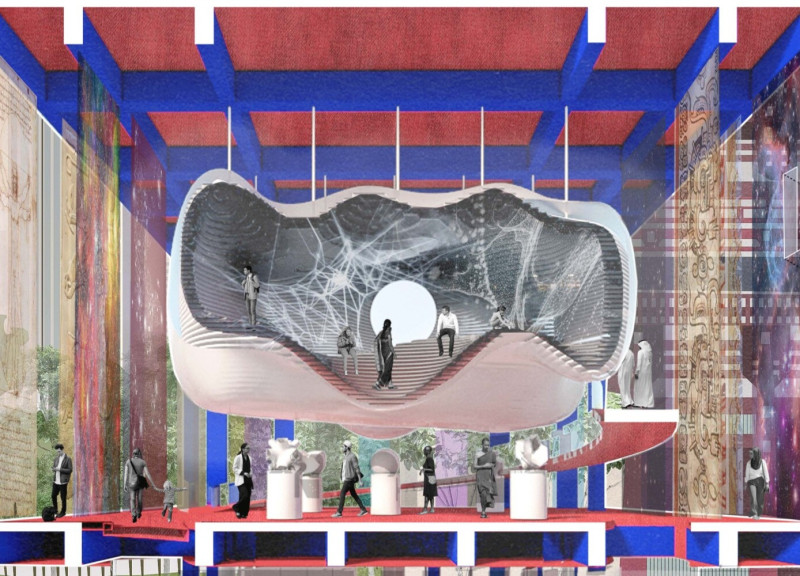5 key facts about this project
The Pavilion of Humanity is designed to connect the physical, virtual, and spiritual aspects of human experience. Set against a backdrop of contemporary challenges, the pavilion serves a unique function, inviting visitors to engage thoughtfully with diverse cultural themes. The overall concept emphasizes how these realms intersect, creating a space where exploration and reflection on human achievements can take place.
Conceptual Framework
The design is built around three main elements: the outer box, the cloud, and the sphere. The outer box represents the tangible world, forming a strong physical presence that encourages interaction. Inside this structure, the cloud stands for virtual reality, suggesting movement and engagement with digital experiences. The sphere symbolizes spiritual reality, inviting deeper contemplation and connection with existential questions. Together, these elements enrich visitors' experiences and enhance understanding of the complexities of modern life.
Spatial Organization
A prominent feature of the pavilion is the connection ramp, which links the three different realities. This ramp is more than just a walkway; it facilitates movement, allowing visitors to transition from one realm to another easily. As people navigate the space, they are drawn into an immersive environment that encourages them to reflect on human achievements and the issues we face today. By design, the ramp enhances circulation while promoting exploration.
Material Application
Materials play an important role in the pavilion's character and durability. Lam. Veneer Lumber adds warmth and a subtle organic touch, balancing the clean and modern look of Stainless Steel Plates. Structural Bolts and Stainless Steel Tie Bars provide essential support, while Steel Beams ensure stability throughout the structure. The combination of these materials creates a practical yet inviting atmosphere, engaging visitors to interact and explore the environment.
Design Detail
Light filters through carefully designed openings in the pavilion, creating an interesting play of light and shadow. This dynamic effect enhances the visitor experience, making the space feel different over time. This interplay between light and architecture adds depth to the design, reflecting the layers of human existence and inviting a deeper understanding of our interconnectedness.


















































